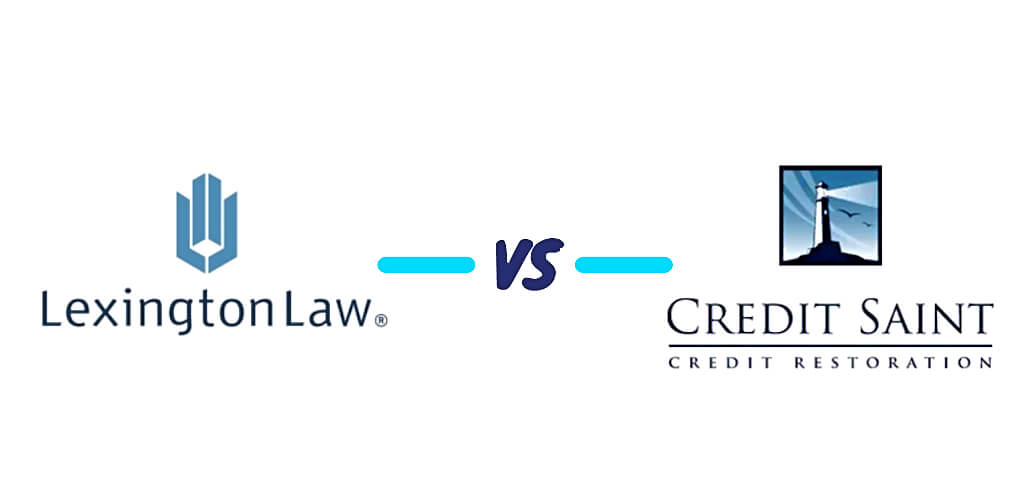What Credit Score Do You Start With?
Disclaimer: We offer completely free content to our users. However, articles or reviews may contain affiliate links and we may earn a commission. Learn more about how we make money.
You are probably reading this because you’re thinking of signing up for your first credit card or student loan and are nervous about the starting credit score.

Credit knowledge is a big problem in the country, and in fact, only one in eight Americans knows one’s scores. Young people also struggle with their credit. They often lack credit education, resulting in many mistakes that continue to haunt them for many years to come. Common pitfalls include over-utilizing credit cards, defaulting on loans, collections accounts, etc.
Before applying for any loan products, there are steps to establish an excellent base score that will lower interest rates on future loans and result in thousands in savings.
What does Your Credit Score Start at?
The first thing to understand is how credit histories work and why they exist in the first place.
A credit score cannot exist without a credit report because the credit score is based on credit activity.
See, card companies, banks, or credit unions are responsible for reporting credit activity. It implies that people who have never borrowed loans or opened card accounts don’t have any credit entries.
Many companies collect credit and consumer information. But major lenders rely on Transunion, Experian, and Equifax for consumer reports, which are commonly known as the CRBs or CRAs.
CRBs don’t just go and collect information. Lenders feed them information on all their active customers. Typically, the reports they put together don’t have any scores on them.
How are credit scores calculated? Lenders use computer algorithms or scoring models to generate a three-digit score that serves as a measure of risk. Low scores mean that someone has a higher chance of defaulting on a new loan.
VantageScore and FICO are popular vendors of scoring algorithms. The FICO score starts from 300 to 850, and here are its credit score ranges:
| Score Categories | What It Implies |
| 800 to 850 | Exceptional – 20% of the population |
| 740 to 799 | Very good – 25% |
| 670 to 739 | Good – 21% |
| 580 to 669 | Fair – 18% |
| 300 to 579 | Poor – 16% |
What is a normal credit score? The average FICO Score in 2020 was 710, the highest it has ever been.
So, if you don’t have any credit history, will you have a score of 300? No, the algorithms consider people without histories as “unscorable.”
What about the default credit score using the Vantage Scoring model? Both VantageScore 3.0 and 4.0 have a similar scoring range that starts from 300 and ends at 850.
How is Your Starting Credit Score Calculated?
VantageScore approximates that about one in five adults is unscorable. The situation arises because of not having past open credit accounts or sparse credit use.
What’s the minimum threshold of becoming scorable when building credit for the first time?
Someone needs at least one open credit account that has generated credit activity for the last 6 months. Insufficient credit history results in “a thin file” that cannot tell potential lenders how you might behave with new credit. So, the credit score is calculated after generating enough history.
Remember the whole essence of scores is to help lenders make accurate, reliable, and fast credit risk decisions, and that’s according to the FICO website. The scores shed light on the likelihood of a customer meeting their credit obligations as agreed.
Planning to apply for a beginner card with few requirements? Wondering what information the lender will report and how the score is calculated?
Credit cards have a spending limit or credit limit, outstanding balance, and interest rates.
The credit company reports the following information to the credit bureaus:
- Account open date – To determine credit age
- Credit limit and outstanding balance – To determine the utilization rate
- On-time payments and late payments – Used to establish a payment history
Both FICO and VantageScore models consider the following scoring factors when generating the starting credit score:
| Scoring Factor | Why it matters |
| Credit utilization ratio (CUR) | A higher utilization rate is considered risky because prior statistics indicate that people with higher CUR tend to fall behind their payments. |
| Payment history | Late payments reported after a bill has been due for over 30 days indicate a pattern of mismanaging credit. |
| Credit history length or age | Old accounts carry more weight than younger accounts because they indicate credit experience. |
| Recent credit applications involving hard inquiries | When getting approved, lenders have to conduct hard inquiries to pull the customer’s reports. Hard pulls are considered negative when they don’t result in new accounts. |
| Types of credit accounts | Having several types of credit accounts is seen as positive. |
What is Your Credit Score When You Turn 18?

At the age of 18, young adults become eligible to take out loans. Card accounts have restrictions for people aged 18 to 21. New applicants must sign up with a cosigner or provide sufficient proof to the card issuer that they have income or assets. The two measures are enforced for other accounts to ensure that young adults have what it takes to repay the debt.
Two main factors will determine the beginning credit score at 18 years:
If you’ve built up credit history before turning 18
It’s possible to generate positive credit history long before applying for loans. Some parents and guardians add their children to their personal cards as authorized users. How does this work?
When a parent or guardian utilizes their card and makes the repayments to the card issuer, their credit activity is also reported to their authorized users. So, it’s possible to be 18 years old and already have an established history. It will not be the same score as the guardian because they may have more accounts and a longer track record.
If you’re 18 with no prior experience
For young adults turning 18 without any prior experience, they can expect to fall into the unscorable category. Will this affect the ability to apply for student loans? Not quite. They can qualify for federal loans.
Many providers offer loans to young adults. They use alternative information in their lending decisions.
What is the average starting credit score after the first credit account? There is no definite figure, but it may range from 500 to 700.
How do young people fare compared to the general population when it comes to credit scores?
According to the 2020 Experian Consumer Credit review, Generation Z (18 – 23) had average credit scores of 674. Millennials averaged 679. The Silent generation (75+) had the best credit scores at 758, closely followed by Baby Boomers (56-74) with average scores of 736.
What accounts for the deviation of scores with age? Older people have more experience with debt and older accounts.
Read More:How to build credit at 18?
How to Check Credit Scores for Free?
About 90% of top lenders in the US use FICO scoring models. So, when checking your starting credit score, ideally choose a service that provides a free FICO score.
When people get their scores from various sources, they usually notice some slight deviations. FICO publishes industry-specific scoring models and releases regular updates. For instance, auto loan lenders use the FICO ® Auto Score 8 to assess risk, while many card issuers use the FICO® Bankcard Score 8.
Some of the best places to check starter credit scores for free include:
1. Credit card companies
Several credit card issuers offer free credit scores to cardholders and non-cardholders.
- Discover FICO Scorecard – No membership requirements.
- Bank of America FICO ® Score – Must have a Merrill or US Trust card.
- American Express VantageScore ® 3.0 – Non-cardholders should first sign up for MyCreditGuide. Only cardholders are eligible for free FICO scores.
2. Mobile apps
Some credit monitoring apps provide free initial credit scores for first-time users. The Credit Sesame app provides a free VantageScore every month. Credit Wise by Capital One is another finance app that anyone can use. Other apps include Experian, Transunion, and MyFico.
3. Scoring & credit monitoring services
Credit monitoring services follow a subscription-based model. Customers pay a monthly fee to access various services, including regular credit reports, identity theft protection, and score updates. Some places to get your scores online include myfico.com and Creditkarma.com.
4. Credit Bureaus
In addition to providing reports, some reporting bureaus also offer free scores, including:
- Experian Free FICO® 8 Score – They also offer free Score Tracking and Credit Rebuilding Recommendations.
- Transunion Free VantageScore 3.0
- Equifax Free VantageScore 3.0
Where to get free reports?
Report monitoring services will typically charge a monthly fee to retrieve copies of reports every month. But there’s a better way to get free reports every week.
Go to annualcreditreport.com. The service was created to ensure that every American can receive their free report copies annually. CRBs have now committed to issuing free reports every week through the site due to the COVID-19 pandemic. The CRBs also offer reports directly from their websites.
How to Build a Good Credit Score?
New to credit? It’s essential to build a strong foundation. Why does a good credit score matter? While it’s not necessary to have an excellent score to qualify for a mortgage, there is a potential to save thousands of dollars compared to people with bad scores.
People with excellent scores even have a higher chance of qualifying for 0% interest credit cards and lower rates.
Use the following tips to boost scores even without applying for loans:
Become an authorized user
Anyone can make you an authorized user on their credit card account. But it’s essential to choose someone with stellar credit. After bringing up this idea, ask them to contact the card issuer or check if they can add authorized users through their online accounts. They will only need personal information such as names and SSN. After processing the request, expect to see new entries within 30 days.
Consider adding alternative credit data to reports
Alternative credit data is information that’s typically not included in reports, for instance, utility payments or rent payments.
Several services have emerged to help people add alternative information to their credit reports. But any account that will be reported must bear personal names. As a strategy, some guardians place certain bill payments under their children’s names. But this is not always a good idea.
Some of the top services for alternative data reporting include:
- Experian Boost – Offered by Experian, the service allows participants to add phone, utility, and streaming service subscriptions to their credit reports.
- eCredable Lift® – They can report utility and phone payments to TransUnion. They are currently charging about $25 per year.
- Rent Reporters – The service reports rent payments to TransUnion and Equifax.
Apply for credit and manage open accounts responsibly
Are there any benefits for using debt, or should you avoid it altogether? Well, debt can be good if managed responsibly. There are plenty of incentives for using credit cards, including one-time bonuses, cashback programs, reward points, and more.
A pattern of positive credit usage also means high credit scores, which are invaluable in all spheres of modern life. For instance, a good credit score can lead to a mortgage with lower rates. Landlords are also less likely to overlook bad credit. Some jobs require great credit, such as Air Force military positions.
Three golden rules to have high scores include:
- Not missing any payments. Straightaway, the biggest reason people acquire bad credit is due to missed monthly payments caused by significant life events such as job losses. But building a robust emergency fund can help bridge the gap in finances during tough times.
- Keeping the utilization rate below 30%. When using plastic, keep the utilization rate below 30%. If a card has a limit of $100, charging $80 brings the utilization rate to 80%. Exceeding credit limits may attract over-the-limit fees and higher interest rates.
- Monitoring reports for errors. Regularly check reports for errors as they impact the starting credit score. Inaccurate information may stem from the reporting process, sharing a similar name with another person, wrong addresses, or fraud.
Challenge the credit bureaus to remove any inaccurate entry by writing a 609 dispute letter. Credit repair can be done without any help, but many people opt for top credit repair firms. What are the most trusted and highly-rated companies in this field?
Bottom Line
We have learned that people with insufficient credit history don’t start at a specific score. The primary determinant of their first scores when they become scorable is how they manage their first credit accounts. When building credit with plastic, it’s essential to keep the utilization rate below 30% and have enough saved up for rainy days. Parents can also help their kids build credit even before turning 18 by adding them to their card accounts as authorized users.






